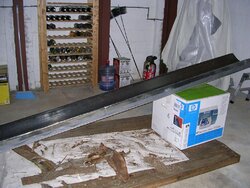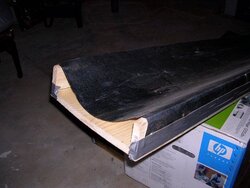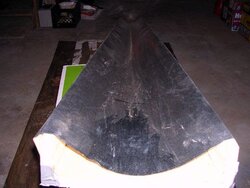Hello all, I finally got around to making a log chute to get wood into my basement. It runs through one of the windows around 6 feet above the ground. I put the other end on a box so that the logs fall off and don't block the way.
Its 3 pieces of wood, all 12' long. The base is 1x12" and the sides are 1x4", screwed on to the base. Then a 12' length of 20" galvanized steel sheet roll (home depot) was cut to length and centered down the slide. Pushed down in the middle, and nailed onto the side, then duct tape to take off the sharp edges. Works like a charm. Only took me about 2 hours to make.
Dean
Its 3 pieces of wood, all 12' long. The base is 1x12" and the sides are 1x4", screwed on to the base. Then a 12' length of 20" galvanized steel sheet roll (home depot) was cut to length and centered down the slide. Pushed down in the middle, and nailed onto the side, then duct tape to take off the sharp edges. Works like a charm. Only took me about 2 hours to make.
Dean





 Especially after it gets wet. The worst thing I've done, was chip up some red oak branches, wet them down, put alfalfa in it, and made a red-oak chip compost. The smell was so bad, it was like, red oak smell x10, you could smell it down the street and I was wondering if the neighbors would be calling the cops.
Especially after it gets wet. The worst thing I've done, was chip up some red oak branches, wet them down, put alfalfa in it, and made a red-oak chip compost. The smell was so bad, it was like, red oak smell x10, you could smell it down the street and I was wondering if the neighbors would be calling the cops.